After making one of the all-time best PS4/Switch games, Vanillaware has struck gold again with Unicorn Overlord
Who knew a game where you do so little could be so good?
As soon as I saw the trailer for Unicorn Overlord back in September 2023, I knew it was a Vanillaware game. It was the food, you see; the studio behind the sublime 13 Sentinels: Aegis Rim has a specific eye for food – Ghibli-esque in its detail – and as soon as a massive meal fit for an army appeared on the screen, I could see Vanillaware’s fingerprints all over it.
The studio’s gourmand obsession traces back to its first high-profile game, Dragon’s Crown, which people may remember for its other… assets, let’s say (just Google ‘Dragon’s Crown Sorceress’ if you don’t know what I’m talking about here. It’ll become very obvious, very quickly). The food in the fantasy brawler had no right looking as good as it did, even if it was overshadowed.
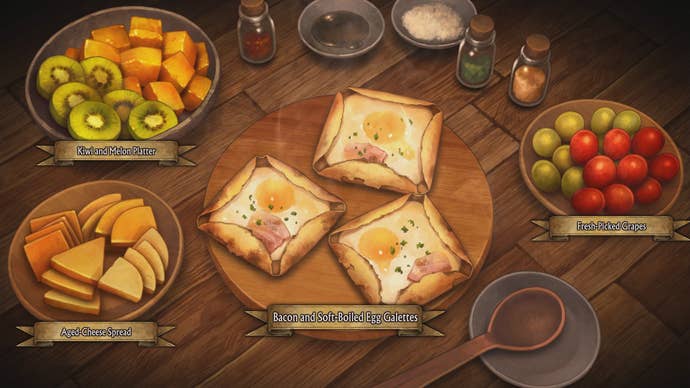
But that devotion to the culinary arts might be the only real through-line between Vanillaware’s more recent games. Dragon’s Crown, 13 Sentinels, and Unicorn Overlord couldn’t be more different. Yes, they’re all side-on 2D games with luscious art, but how they actually play varies hugely, game-to-game. Unicorn Overlord is not a beat-em-up like Dragon’s Crown, nor is it a visual novel-cum-RTS like 13 Sentinels (one of the best games of last-gen). It’s more SRPG, some sort of bastard lovechild between Final Fantasy 12’s Gambit system and Fire Emblem’s skirmishing, albeit with squads of soldiers rather than single units.
The game unashamedly draws from the classic tactical RPGs that proliferated in the 1990s (think Tactics Ogre, Final Fantasy Tactics, Langrisser, Shining Force). But Vanillaware – as with its past titles – hasn’t leaned too hard on its inspiration. Unicorn Overlord feels very much like its own thing; not some hodge-podge smorgasbord that pilfers elements from everything else just to see 90s kids crack a smile.
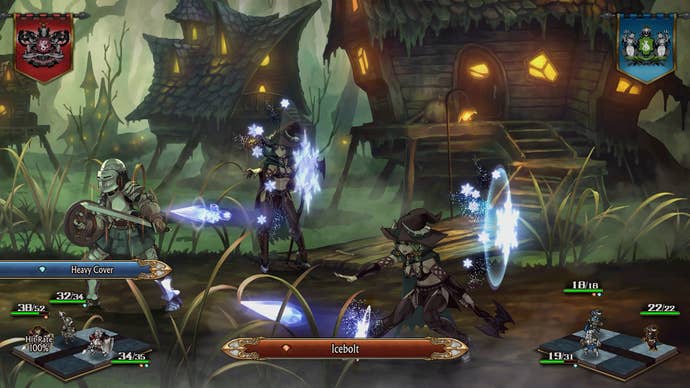
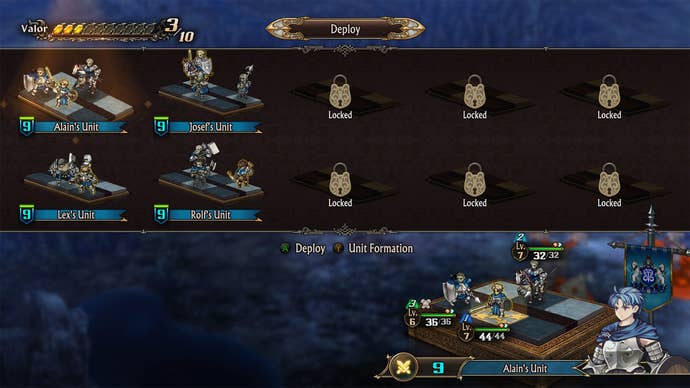
The result is a game that blew me away. Unicorn Overlord is fast – battles are over before they’ve barely begun, and the fact you can fast-forward overworld and combat speeds independently really helps if you just want to get into the meat of the game. You form units of characters that have joined your cause (you’re a fledgling prince, trying to reclaim a lost empire – standard stuff), and deploy these units into maps.
It’s not grid-based, a la Fire Emblem, but 2.5D: ground units are glued to paths, and aerial units are a bit more agile. You need to think about the rock-paper-scissors of which units are strong or weak to what. Initially, it’s your standard tactical triangle, but very quickly you start to realise it’s actually more like a dodecahedron than a triangle – archers take down aerial units, sure, but housecarls can batter soldiers, and cavalry units come unstuck against thieves. And so on.
Despite the classes being varied and dense, it all just… makes sense. Part of this is down to the lush illustrations making everything readable and understandable at first glance, part of it is down to how well tutorialized you are about every aspect of the game. Yes, there’s a lot of text, and some of the voice acting is hammy. But that’s what you’re here for, right? A big cheesy fantasy story about revenge and the power of friendship. You’ve got to take all that on the chin if you want to get into the maths of the thing.
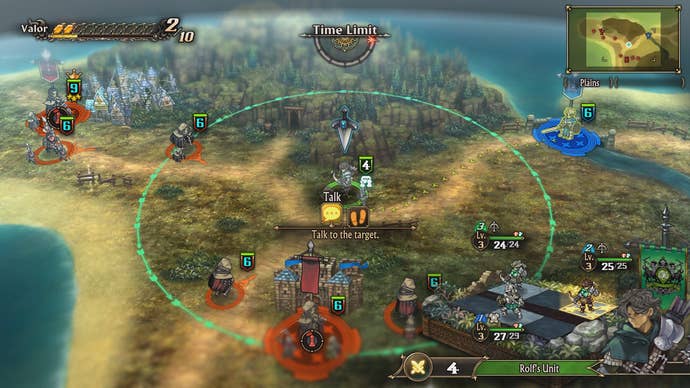
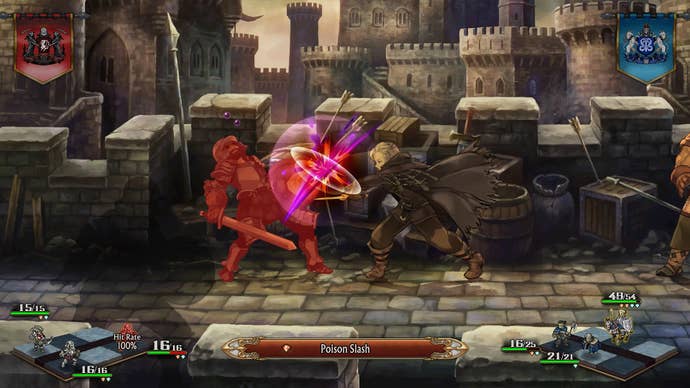
And that, I think, is where Unicorn Overlord shines the most. I only managed to play about four hours of the game, but even by that point the combat systems and tactical depth of the game was beginning to blossom. By the end of my session, I could command five different squads of about three units, and the synergy and synchronisation on display was mind-blowing. I dread to think what the development flow charts looked like when Vanillaware was refining this system.
Each unit attacks automatically, so you need to choose which skills it’ll use in battle. Will your mage automatically heal at the end of the turn, or buff your soldier so it takes less damage generally? Do you want your cavalry to try and run down enemies before they have a chance to attack, or respond with a brutal counter after eating some damage? Will you deploy archers near another skirmish to rain arrows from on high, or have them focus on a roving band of unicorn riders that could debilitate your vanguard?
It is strategy game catnip, and genuinely feels like a perfect compromise between the strategic depth of Tactics Ogre and the accessibility of Fire Emblem. The fact it all looks so gorgeous and sounds so beautiful is a bonus, but this core gameplay loop is what planted seeds in my brain. You can recruit up to 60 – 60! – units at once. I can only imagine the scale of the final battles, the interplay of the units, and the mess of skills that’ll be on show as we head to the inevitably climactic ending of the game. Already, it feels as deep and rich as your favourite 90s RPG.

In this job, you do a lot of previews – some fun, some not so fun. It’s very rare that I am loath to close down the game I’m playing and move on to something else. I am being completely honest when I say: I have thought about Unicorn Overlord every day since I previewed it. Every day. I cannot wait to get my hands on the full version and start digging into its strange, religious-historical lore. I can’t wait to start writing down scraps of half-done maths to work out how to min-max my burgeoning units. I can’t wait to reclaim the empire in the name of my spunky hero and his ragtag bunch of weirdo friends.
Unicorn Overlord already looks like one of 2024’s must-play RPGs – and it’s up against some stiff competition. For anyone that’s got even a remote interest in tactics games or fantasy themes, you can’t afford to pass this one up.
Unicorn Overlord launches on PS4, PS5, Xbox One, Xbox Series X/S and Nintendo Switch on March 4, 2024.

